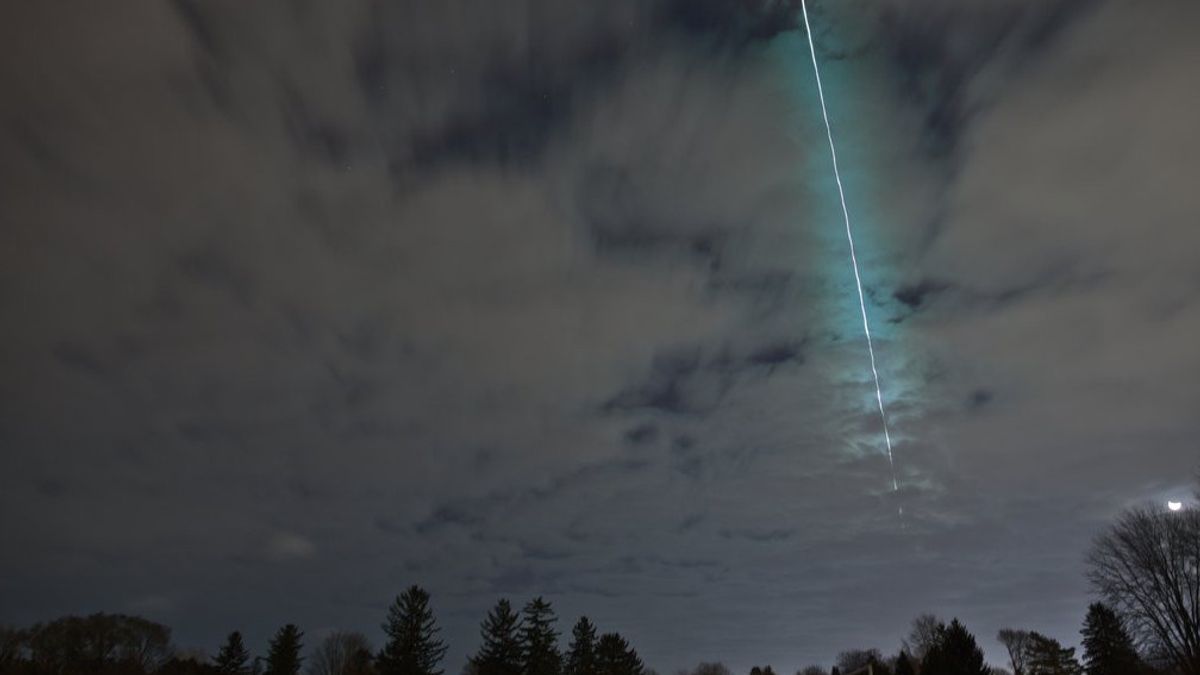JAKARTA - A small asteroid last week shot up in the southern Ontario region of Canada. Fortunately, this asteroid poses no danger to Earth but is likely to deploy tiny meteorites on the southern coastline of Lake Ontario.
Dubbed the 2022 WJ1 asteroid, it is about 1 meter wide, and was detected three and a half hours before it plunged into Earth, making this event the sixth time in the history of a small asteroid has been tracked in space before entering Earth's atmosphere.
The planet's defense community really showed their skills and readiness for their response to this brief warning event, said the manager of the Near-Earth Object Observation (NEOO) program for the Planetary Defense Coordination Office (PDCO) at NASA Headquarters in Washington, USA, Kelly Fast.
The 2022 WJ1 asteroid was discovered by NASA-funded Catalina Sky Survey on the night of November 18 during routine search operations for near-Earth objects.
Observations were quickly reported to the Minor Planet Center (MPC) for small sky object position measurements and the data was then automatically posted to the NEO online page.
NASA Scout's impact hazard assessment system, managed by the Center for Near-Earth Object Studies (CNEOS) at the Jet Propulsion Laboratory in Southern California, automatically takes new data from the page and begins calculating possible object trajectories and impacts.
CNEOS calculates every known near-Earth asteroid orbit to provide an assessment of potential impact hazards in support of NASA's PDCO.
Seven minutes after the asteroid's information was published, NASA Scout has determined the asteroid has a 25 percent chance of hitting Earth's atmosphere, with a possible impact site stretching from the Atlantic Ocean off North America's East Coast to Mexico.
As the Catalina Sky Survey continues to track asteroids over the next few hours, NASA Scout is using this new data to continuously update the asteroid's trajectory and the system's assessment of possible impacts.
A total of 46 observations of the asteroid's position were finally collected, the last one was carried out just 32 minutes before a collision by the University of Hawaii telescope on Mauna Kea.
As expected, at 03:27 a.m. EST, the asteroid shot through Earth's atmosphere at a shallow angle and then burst, likely producing a small meteorite shower and leaving no severe damage.
NASA Asks for Larger Asteroid Detection
But with this event, NASA is tasked with detecting or tracking much larger near-Earth objects and can survive through Earth's atmosphere and causing damage on land.
"Such harmless impacts have become a spontaneous exercise in the real world and give us the belief that NASA's planetary defense system is capable of informing its response to the potential serious impact of larger objects," explained Fast.
For larger asteroids, NASA is asked to detect them earlier than small objects such as the 2022 Asteroid WJ1.
Such small asteroids are harmless to Earth, but can be useful knowledge for NASA's planetary defense capabilities for discovery, tracking, orbital determination, and impact predictions.
Launching Digital Trends, Monday, November 28, interest in planetary defense has increased recently through a test of the Double Asteroid Redirection Test (DART) spacecraft, which managed to change the asteroid's orbit by hitting it.
Unfortunately, being able to change the path of an asteroid to only half of the problem, NASA must find potentially dangerous asteroids that threaten the planet.
The English, Chinese, Japanese, Arabic, and French versions are automatically generated by the AI. So there may still be inaccuracies in translating, please always see Indonesian as our main language. (system supported by DigitalSiber.id)








